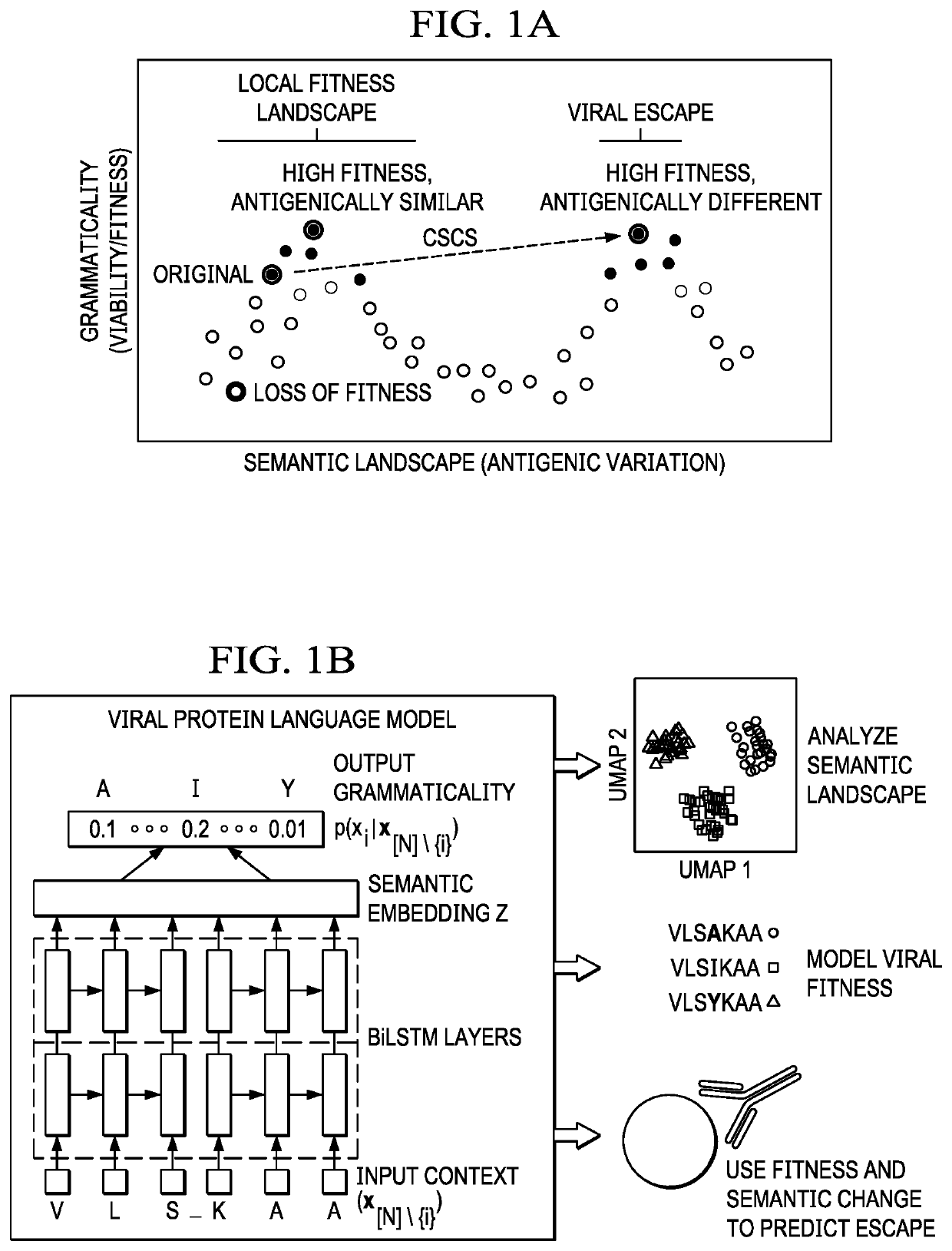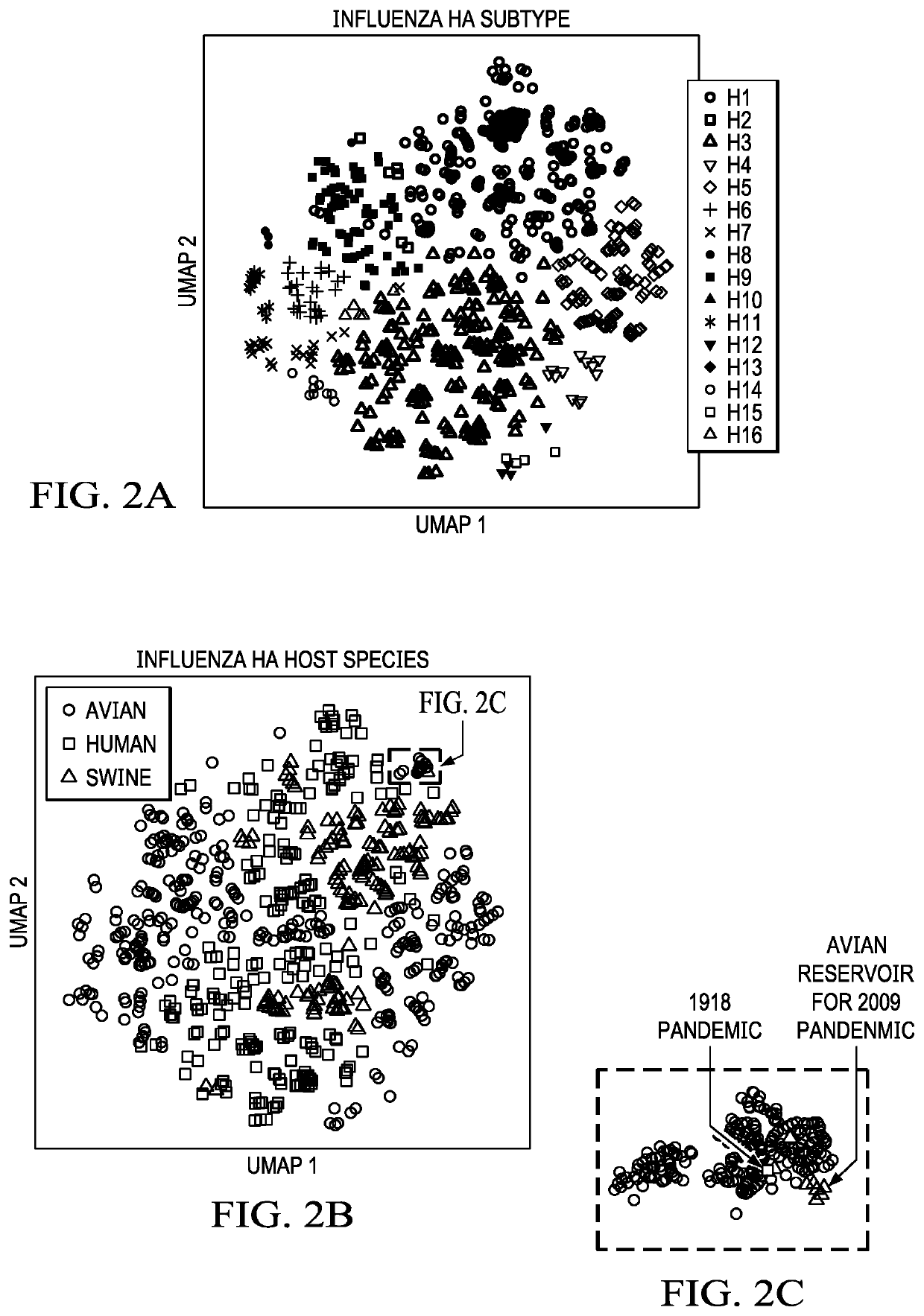Escape profiling for therapeutic and vaccine development
a technology of escape profiling and therapeutics, applied in the field of escape profiling for therapeutics and vaccine development, can solve the problems of inability to profile even a single single virus, the inability to test the escape potential of many (combinational) mutations in many viral strains, and the inability to mutate and evade the human immune system, so as to achieve rapid, efficient and accurate identification.
- Summary
- Abstract
- Description
- Claims
- Application Information
AI Technical Summary
Benefits of technology
Problems solved by technology
Method used
Image
Examples
Embodiment Construction
[0027]According to this disclosure, language modeling is used to shed light on those parts of a protein not prone to escape, thereby enabling more-targeted vaccine and anti-viral design and development. As will be described, the approach herein trains an algorithm that learns to model escape, preferably from viral sequence data alone. It is not unlike learning properties of natural language from large text corpuses, since languages like English and Japanese use sequences of words to encode complex meanings and have complex rules (e.g., grammar). To escape, a mutant virus must preserve infectivity and evolutionary fitness, i.e., it must obey a “grammar” of biological rules, and the mutant must no longer be recognized by the immune system, analogous to a change in the “meaning” or the “semantics” of the virus. As will be seen, the technique of this disclosure models viral escape preferably by characterizing both semantic change and grammaticality. More specifically, the approach (some...
PUM
 Login to View More
Login to View More Abstract
Description
Claims
Application Information
 Login to View More
Login to View More - R&D
- Intellectual Property
- Life Sciences
- Materials
- Tech Scout
- Unparalleled Data Quality
- Higher Quality Content
- 60% Fewer Hallucinations
Browse by: Latest US Patents, China's latest patents, Technical Efficacy Thesaurus, Application Domain, Technology Topic, Popular Technical Reports.
© 2025 PatSnap. All rights reserved.Legal|Privacy policy|Modern Slavery Act Transparency Statement|Sitemap|About US| Contact US: help@patsnap.com



